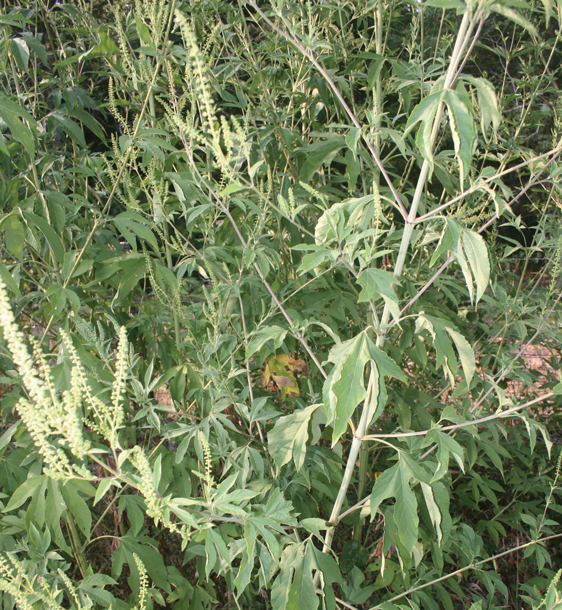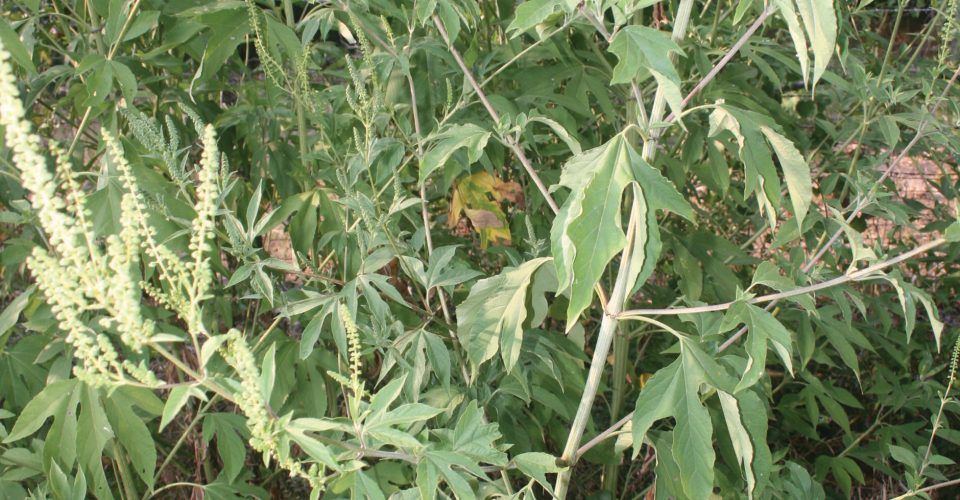Giant Ragweed (Ambrosia trifida)
Giant ragweed is widespread in North America, Canada and northern Mexico. It is a native annual weedy species in the sunflower family.
The noxious plant is widely known for its pollen and its impact on the human population as an allergen.
- Often found on roadsides, disturbed areas, cropland fields and overflow areas
- Can reach a height of 20 feet in fertile, moist soils, but commonly averages in the 6-to-7-foot range
- The toothy-edged leaves can have various shapes but are usually palmate, with 3-to-5 lobes oppositely arranged on the stem
- Produces a spike-shaped seedhead at the end of the stem that forms burs with small spines attached to the ends
- Spreads throughout the land on the fur of animals, running water, humans and machinery
Giant ragweed is also known by several other names. “Bloodweed” is the most common because when the stem is broken, the sap from the plant turns “blood red” and will stain the skin.
Native American Indians used the plant as a medicine to treat a number of ailments from pneumonia to insect bites.
Giant ragweed is very palatable to livestock and is generally not a problem on grazing lands. If it becomes a problem plant, it can be controlled easily with a properly timed application of herbicide.
Editor’s note: Kent Ferguson, retired rangeland management specialist from USDA Natural Resources Conservation Service (NRCS), is providing us with plant identification photo stories to help ranchers identify those forbs, forages and species growing in the pastures. Additional photos provided by USDA NRCS.
Giant Ragweed is excerpted from the June 2016 issue of The Cattleman magazine.


